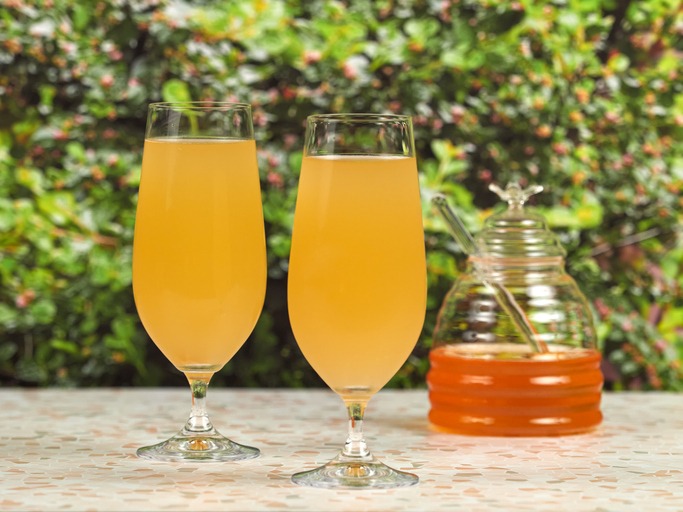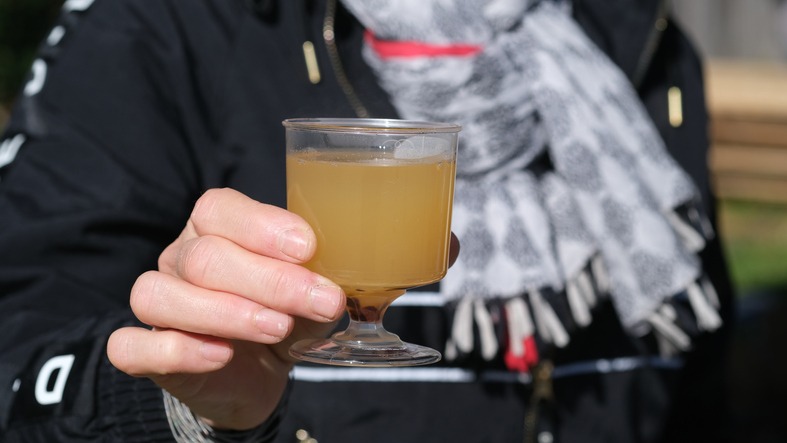Beer and mead are two ancient alcoholic beverages with distinct characteristics and histories. Beer, typically brewed from grains such as barley, involves fermentation with hops, which impart bitterness and aroma. On the other hand, Mead is made from fermenting honey with water, often flavored with fruits, spices, or herbs.
While beer’s flavor profile is influenced by its malt and hop content, mead’s sweetness and complexity come from its honey base and additional ingredients. Understanding these differences helps us appreciate the unique qualities each beverage brings to the table.
Production Methods
When making mead, the base ingredient is honey, which is diluted with water to create a liquid known as must. This must then be fermented, often with the addition of fruits and spices to enhance flavor.
On the other hand, beer production starts with malted grains, which are heated and soaked to extract sugars.
Key differences in the production methods include:
- Primary Ingredient: Mead’s primary ingredient is honey, while beer relies on malted grains.
- Yeast Varieties: Both mead and beer require yeast for fermentation, but different strains are used. Mead often uses wine yeast, whereas beer uses specific beer yeast strains.
- Clarification and Aging: Mead typically undergoes a clarification and aging process similar to wine, while beer can be marketed soon after fermentation.
- Flavor Enhancers: Fruits and spices are commonly added to mead during fermentation, while beer’s flavor is influenced by the grains and hops used in brewing.
Beer and mead are both alcoholic drinks, but they are quite different. Here’s a simple breakdown of their differences:
Ingredients
- Beer: Made from malted barley, hops, water, and yeast.
- Mead: Made from honey, water, and often fruits and spices.
Key Points:
- Beer uses malted barley for its fermentable sugars.
- Mead relies on honey for its fermentable sugars.
- Hops in beer add bitterness and act as a preservative.
- Yeast is used in both beer, typically brewer’s yeast, and mead, which uses wine yeast.
- Additional Flavors: Mead can include fruits and spices like apples and cinnamon, while beer sometimes includes fruits but mainly depends on the balance of barley and hops for flavor.
Flavor Profiles
Mead and beer each provide unique flavor profiles that cater to diverse tastes. Mead, also known as honey wine, typically features a sweet, floral, and sometimes fruity taste. Its flavor is primarily influenced by its ingredients, such as honey, water, and occasionally fruits and spices. The type of honey and the fermentation process are critical in shaping its character. For example, wildflower honey may give mead a more floral and complex taste, while clover honey could result in a subtler profile.
Meanwhile, beer’s flavor can range from light and crisp to bitter and hoppy. Malted grains, hops, water, and yeast shape its taste. The choice of malt and hops significantly influences the final taste. Light beers might be refreshing and crisp, whereas darker beers can be rich, malty, and robustly bitter.
Alcohol Content
Mead typically boasts higher alcohol content, ranging from 8% to 20%, whereas beer generally falls within the 4% to 7% range. This significant difference stems from the fermentation process. Honey can ferment into higher alcohol levels than the grains used in beer.
When comparing mead and beer, you’ll notice that mead can sometimes reach impressive alcohol levels. Some European meads even hit up to 20%, making them much stronger than your average craft beer. This higher alcohol content in mead means that even a small glass can pack a punch compared to a pint of beer.
Variation in Types: Hydromels are lower in alcohol, while sack meads are higher.
Fermentation Ingredients: Honey in mead results in higher alcohol potential.
European Influence: Some meads can reach up to 20% alcohol content.
Average Craft Beer: Typically ranges from 4% to 7% alcohol content.
Clarity and Aging
Aging significantly enhances the complexity of mead. It allows flavors to meld and create a smoother, more integrated profile. This process, lasting from several months to many years, produces richer flavors. The longer mead ages, the more sophisticated and layered its taste becomes.
In contrast, beer’s aging potential varies greatly depending on its style. While some beers benefit from short aging periods, many are brewed for fresh consumption. To achieve clarity, brewers often use filtering or fining agents to remove residual particles to ensure the beer looks appealing and maintains its desired characteristics. Although aging can enhance specific flavors in certain beers, the focus is usually on preserving freshness and stability.
Historical Context
The history of alcoholic drinks shows how old mead and beer are. Mead, also known as the ‘nectar of the gods,’ has existed for thousands of years in China, Greece, Scandinavia, and England. In England, monks were famous for their mead, highlighting its importance in religious and social life.
Beer also has a long history. Made from barley and hops, it started in ancient Egypt and Sumer. Often safer to drink than water, it became a crucial beverage for many people. Beer’s evolution over the years reflects its deep connection to different societies throughout history.
Here’s a quick snapshot of the historical context:
- Mead: Made from honey and water, perfected by monks in England.
- Beer: Made from barley and hops, with ancient roots in Egypt and Sumer.
- Cultural Significance: Both beverages held significant roles in their respective societies.
- Different Types: Evolved over time, reflecting diverse cultural preferences.
Market Availability
Beer is more accessible than mead. This discrepancy is primarily due to the differences in their production processes. Beer is mass-produced, while mead, created by fermenting honey, water, and yeast, remains less common. You are likelier to find mead at specialty beer and wine shops rather than at every grocery store.
Mead’s production process can sometimes overlap with beer and wine, especially when added fruits and botanicals. Unlike beer, mead typically does not require boiling. Some wineries also produce mead, especially if they already maintain beehives for pollination.
Here’s a quick comparison of market availability:
| Beverage | Market Availability |
| Beer | Widely available |
| Mead | Specialty stores |
| Wine | Common |
| Craft Beer | Increasingly common |
| Mead at Wineries | Limited but possible |
Conclusion
Beer and mead are distinct alcoholic beverages with unique ingredients, production methods, flavors, and historical significance. Beer, made from malted barley, hops, water, and yeast, is widely available and has a range of flavors from crisp to hoppy. Mead, made from honey, water, and often fruits and spices, is typically sweeter and has a higher alcohol content. While beer is more accessible, mead holds a special place in history and culture. Understanding these differences highlights what makes each drink special and appreciated in its own right.



